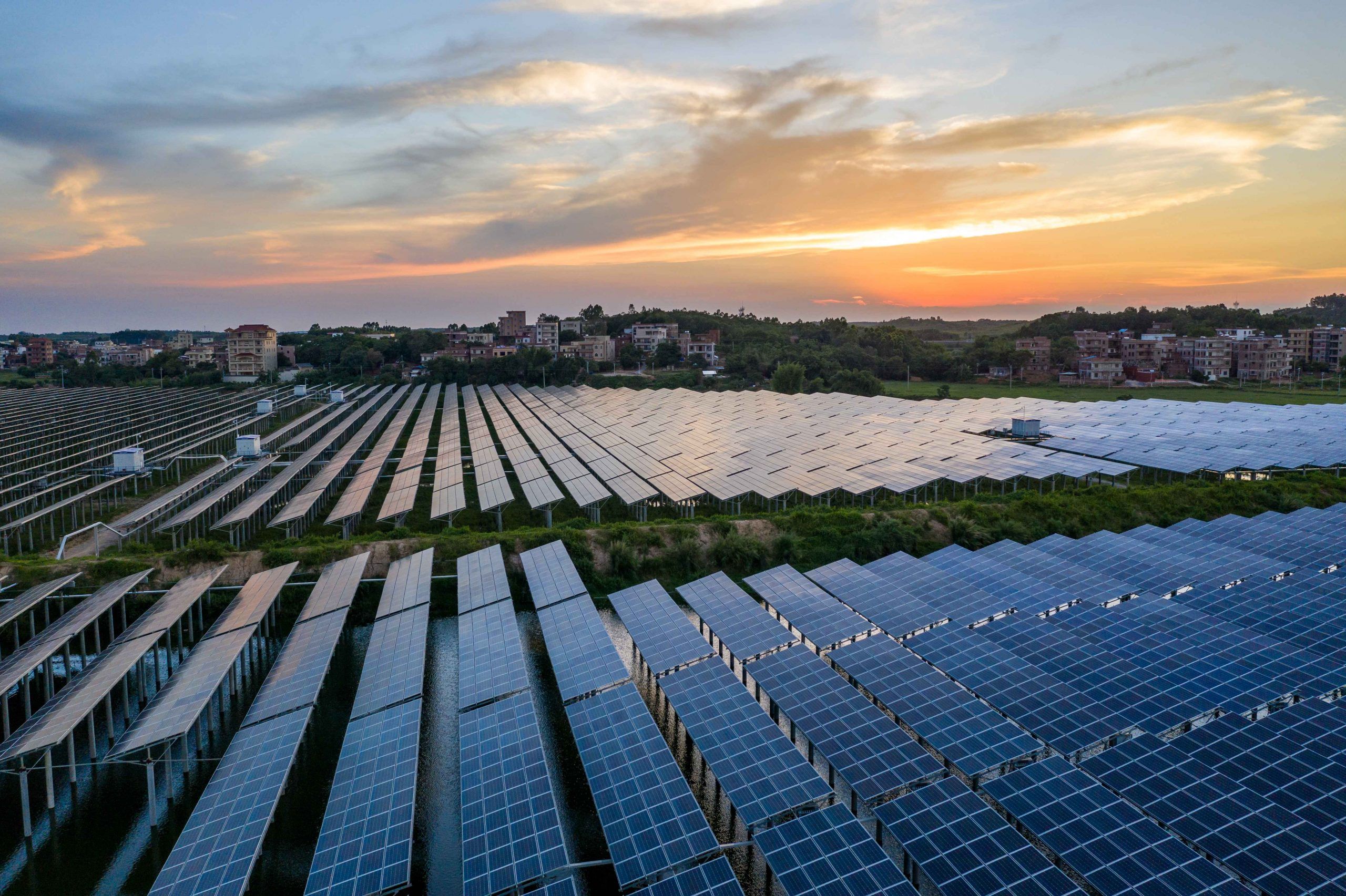Pupuk Kaltim’s Efforts in Achieving Decarbonization by Operating a Solar Power Plant

Carbon emissions and their impact on environmental health
Carbon emission occurs when compounds containing carbon are heated, producing carbon
dioxide. This includes day-to-day activities of turning on the gas, burning logs and coals for heat
and electricity, and using cars and motorcycles. This activity happens from house to house and
on a larger scale powering a building or factories.
So in general, when we’re talking about carbon emissions, we are talking about carbon dioxide
being released into the earth’s atmosphere. These carbon dioxides are greenhouse gases that
absorb and radiate heat. On a lower amount than what it currently is, carbon dioxide helps
absorb the thermal infrared energy that radiates from earth’s land and ocean surfaces that is
warmed by sunlight. Without this natural greenhouse effect, Earth’s average annual temperature
would be below freezing.
But as human activities are so interlinked with burning fossil fuels for energy, there is more
carbon being released than the ones being naturally absorbed by trees or the oceans, resulting
in additional heat being trapped in the atmosphere and raising the earth’s average temperature.
This rising temperature affects not just climate but every aspect of our environment. Take the
ocean for example, according to NASA, the ocean does an excellent job at absorbing the extra
heat from the atmosphere. This is due to water being great at storing heat. But as the
temperature rises, the top few meters of the oceans absorb more of that heat.
This could mean that without intervention, the temperature of the ocean will continue rising,
disrupting the plants and animals that live there. On top of the overfishing, bottom trawling, and
oil spills, the health of the ocean’s ecosystem is dire as it is. This could lead to less and less
healthy and safe fish available to consume.
Here are other effects of carbon emissions on the environment:
- Carbon emissions and greenhouse gasses lead to a rise in the earth’s temperature,
which causes climate change. Climate change can mean more drought periods or
heavier rainfall that causes floods. - Carbon emissions also directly affect human life. With the high amount of carbon in the
form of smog and air pollution in the air, it can lead to an increase in respiratory disease.
Indonesia’s commitment to reducing national GHG emissions
Aware of the great threat carbon emissions have, nations of the world, including Indonesia,
have agreed on a commitment to cut their greenhouse gas emissions. According to the
Directorate General of Climate Change Control of the Ministry of Environment and Forestry,
Indonesia stated its commitment at the Conference of Parties (COP) 15 of 2009. This
commitment is to reduce greenhouse gas (GHG) emissions by 26% (with its own efforts) and by
41% (if it receives international assistance) by 2020.
Indonesia’s commitment strengthened through the first Nationally Determined Contribution
(NDC) document of the Republic of Indonesia in November 2016, with the stipulation of an
unconditional target of 29% and a conditional target of up to 41% compared to business as
usual (BAU) scenarios in 2030.
This commitment is coupled with efforts from all government entities, from a tax reduction on
electric vehicles to improving public transportation systems in big congested cities like Jakarta.
Reaching the NDC 2030 goal requires an all-hands-on-deck effort that includes pushing for
changes and finding a better alternative to fossil fuels.
Solar Power Plant installation by Pupuk Kaltim
One state-owned corporation, PT Pupuk Kalimantan Timur (Kaltim), supports the government’s
effort in achieving the NDC 2030 by implementing solar power plants. The solar power plant
was installed as an alternative energy source to fossil fuels.
In August, PT Pupuk Kaltim unveiled the Rooftop Solar Power Plant in their office in Bontang,
East Kalimantan. According to Liputan6, the operation of the rooftop solar power plant covering
an area of 6.500 square meters is a manifestation of PT Pupuk Kaltim’s commitment to
achieving the target of reducing carbon emissions by up to 32,50% by 2030.
PT Pupuk Kaltim’s President Director, Rahmad Pribadi, said that the rooftop solar power plant
has been built since May 2021 and is a form of their commitment to implementing Environment,
Social, and Governance (ESG). This ESG implementation is also part of the growth roadmap of
the companies for the next 40 years.
“The development of the ESG concept by considering outputs that provide many benefits for the
environment is our strategy in accelerating the rate of decarbonization of the petrochemical and
fertilizer industry,” according to Rachmad as reported by CNN.
Other Pupuk Kaltim efforts to participate in reducing national carbon emissions
- PT Pupuk Kaltim did not just stop at using solar power plants as alternatives to fossil
fuels. Through strategic initiatives, PT Pupuk Kaltim has succeeded in achieving
decarbonization in the company’s operational environment, up to 16% by 2021. These
initiatives include: - Factory efficiency to reduce exhaust gas by saving natural gas use, including by
revamping ammonia plants - The development of new businesses and technologies, which are focused on the
absorption of carbon dioxide (CO2) to be used as raw material for other products as well
as substituting natural gas raw materials with New Renewable Energies (NRE)- based
hydrogen to produce Green Ammonia. - Using the biological approach that is capable of reducing gas emissions naturally
through biological plants that can absorb carbon, such as mangroves which can absorb
more carbon than terrestrial forest ecosystems.
With these initiatives, along with their other program implementing the ESG, like supporting
sustainable agriculture, PT Pupuk Kaltim targets to reduce greenhouse gas emissions by up to
1,6 million tons per year.
